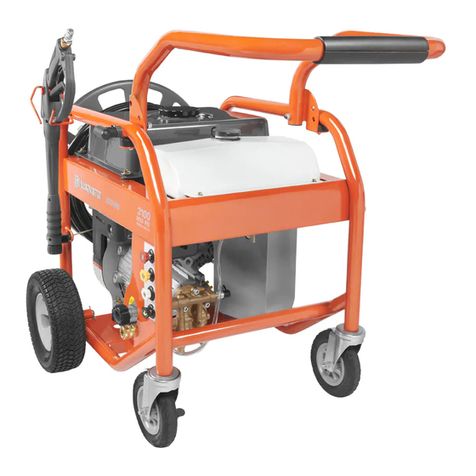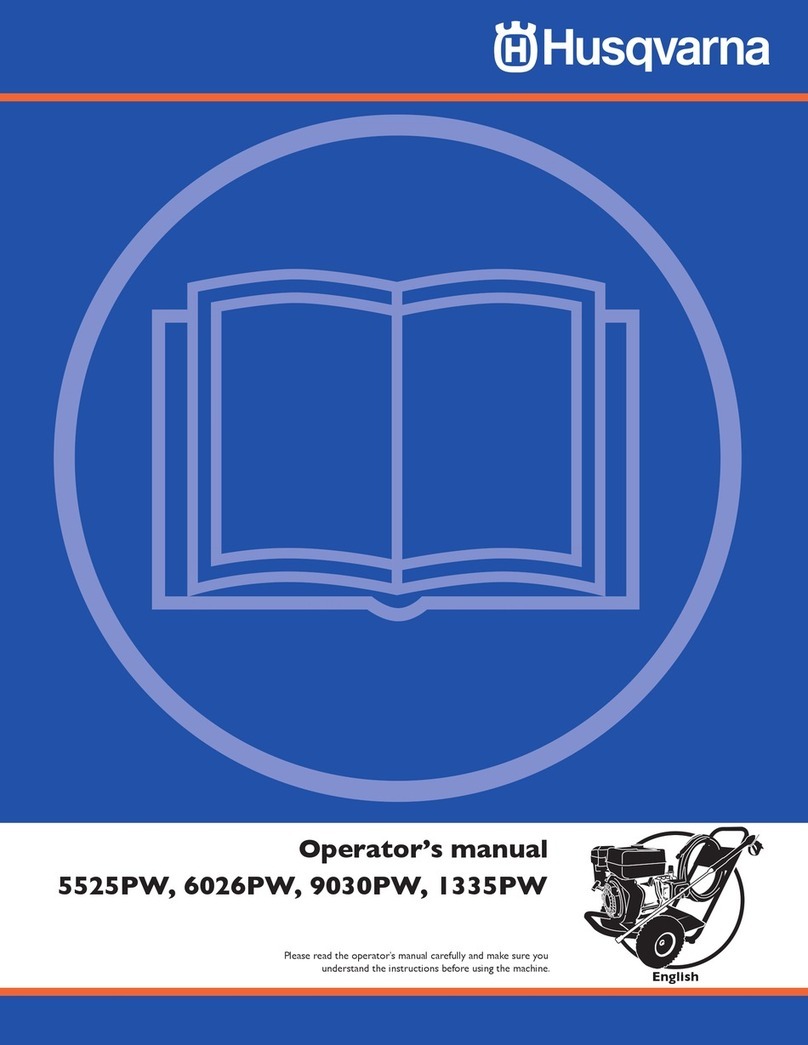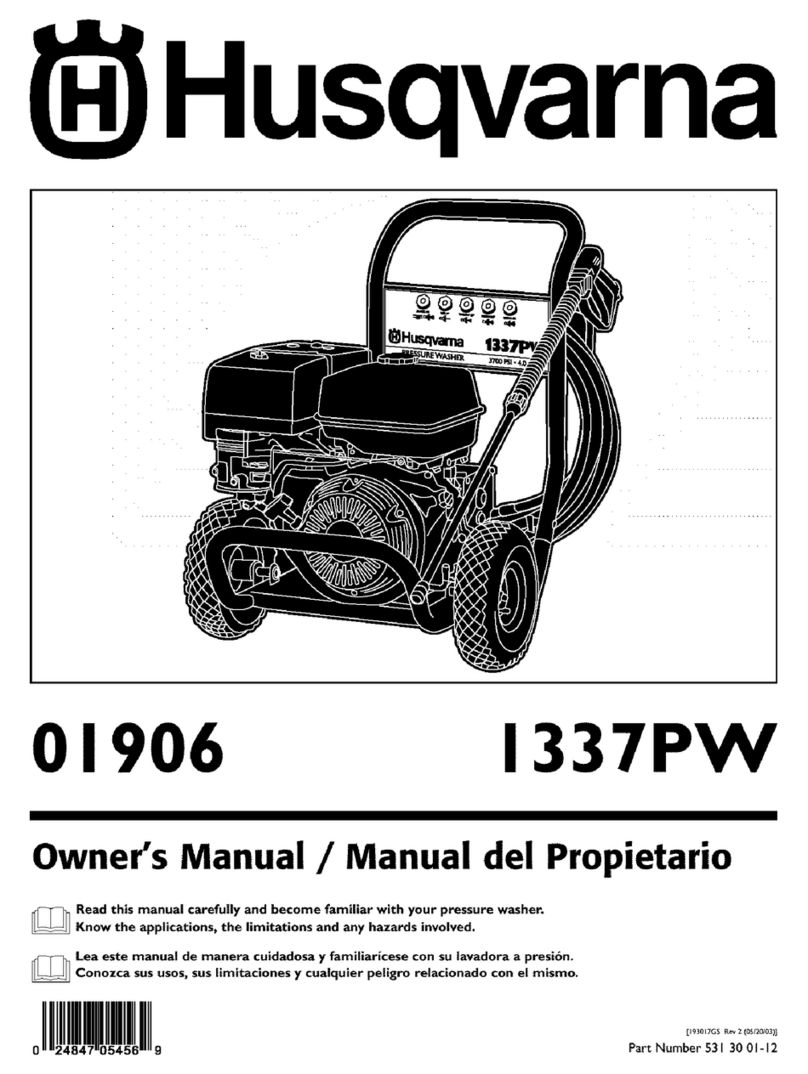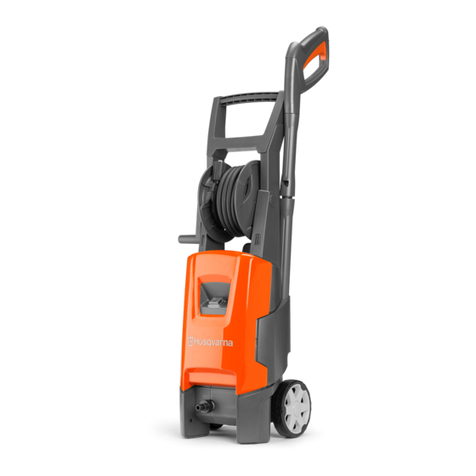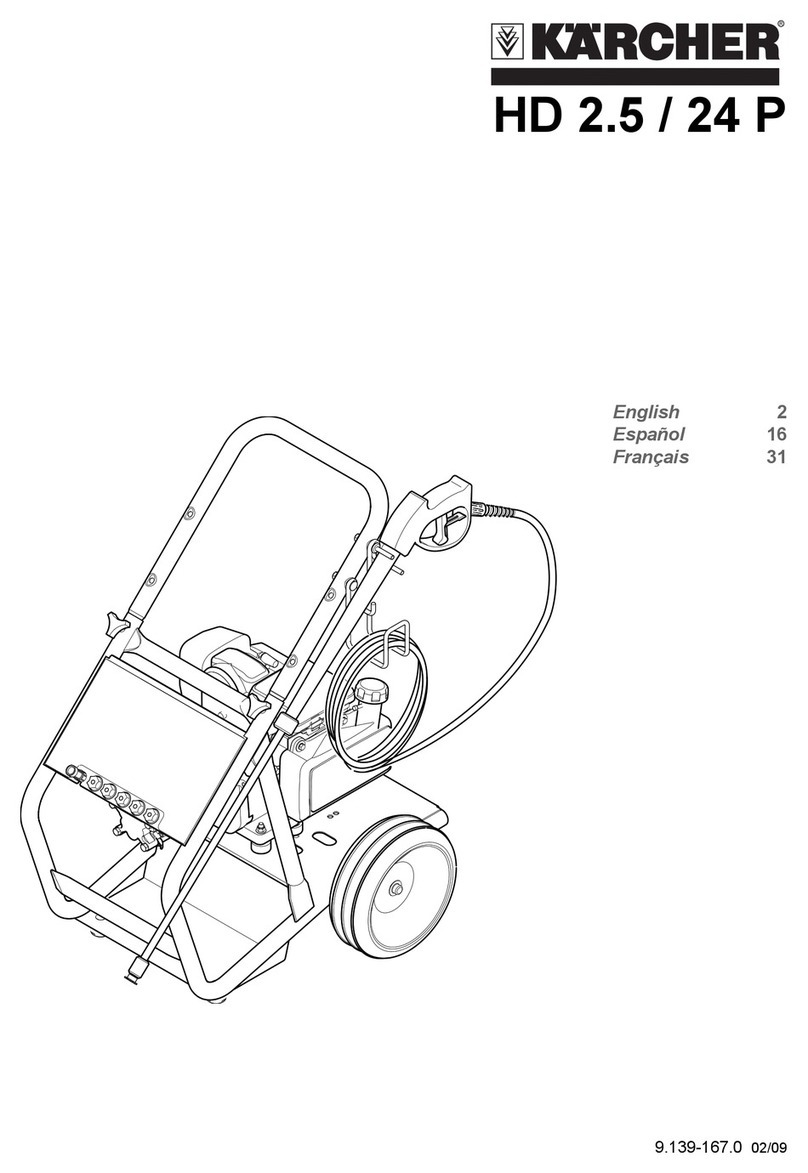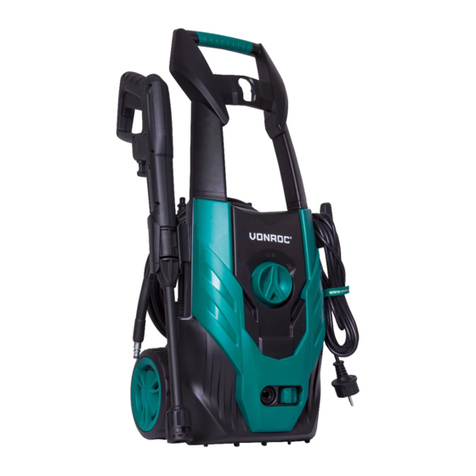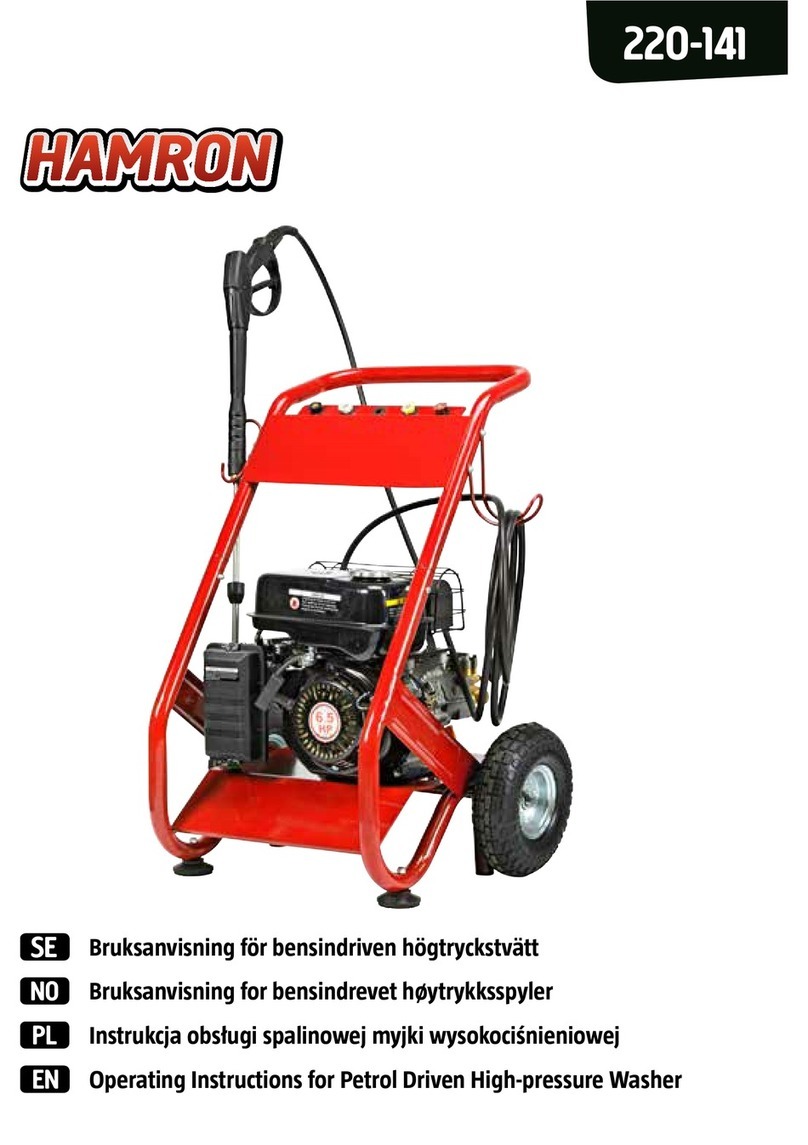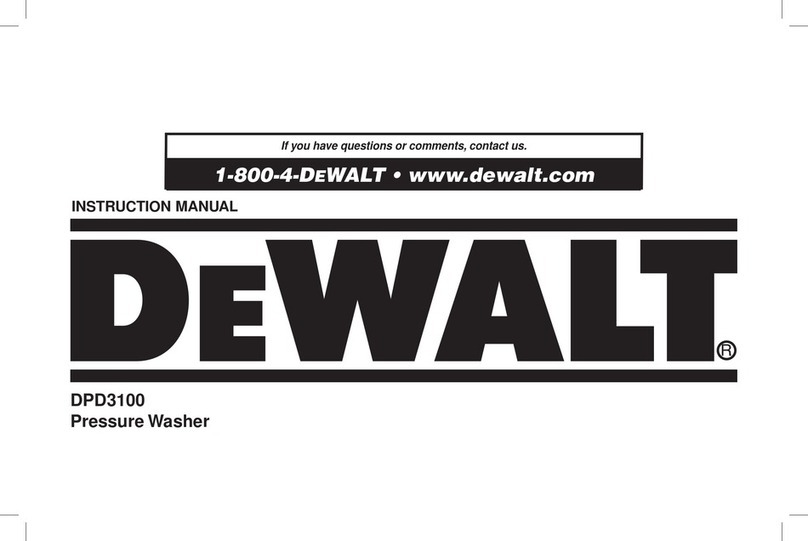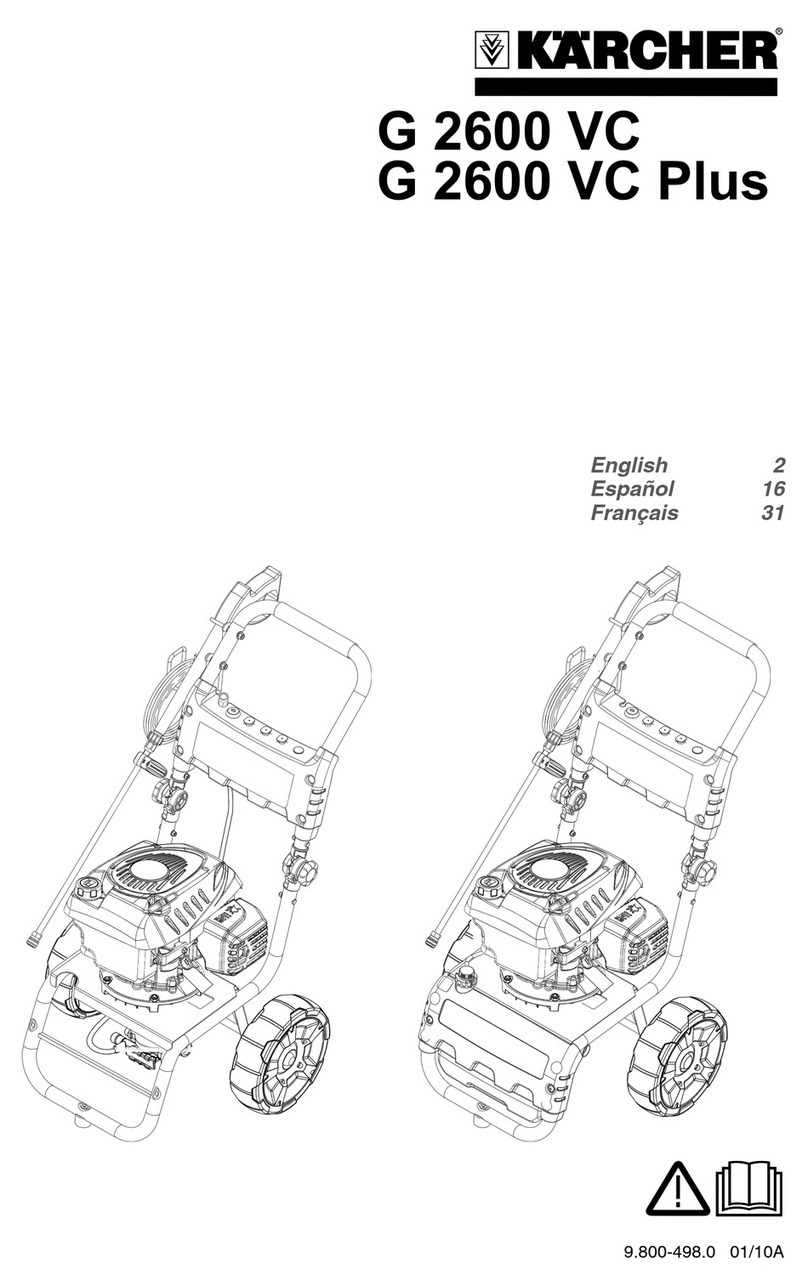2 – English
Workshop Manual
PW 345C, PW 350, PW 360
Contents
1 Introduction and safety regulations ............... 3
1.1 General ..........................................................................3
1.2 Revisions........................................................................3
1.3 Target group ...................................................................3
1.4 Safety instructions..........................................................3
1.4.1 General safety instructions ...................................3
1.4.2 Special safety instructions ....................................3
2 Repair instructions........................................... 5
2.1 Product overview............................................................5
2.1.1 Cabinet parts overview, PW 345C,
PW 350, PW360 ...................................................5
2.1.2 Hose reel overview ...............................................6
2.1.3 Motor/pump unit overview.....................................7
2.2 To disassemble/assemble the front cabinet ...................8
2.3 To disassemble/assemble the pump cover ....................8
2.4 To disassemble/assemble the start/stop system............9
2.5 To disassemble/assemble the switch box cover ............9
2.6 To disassemble/assemble the motor/pump unit,
PW 345C......................................................................10
2.7 To disassemble/assemble the switch ...........................10
2.8 To disassemble/assemble the motor/pump unit,
PW 350, PW 360.........................................................11
2.9 To disassemble/assemble the hose reel/internal
hose PW 350, PW 360.................................................11
2.10 To disassemble/assemble the hose reel,
PW 350, PW 360........................................................12
2.11 To disassemble/assemble the high pressure hose,
PW 350, PW 360........................................................12
2.12 To disassemble/assemble the hose reel,
PW 350, PW 360.......................................................13
2.13 To assemble the hose reel, PW 350, PW 360............13
2.14 To disassemble/assemble the easy start valve ..........14
2.15 To disassemble/assemble
the Non Return Valve (NRV) ......................................14
2.16 To disassembly/assemble the pump ..........................15
2.17 To measure the resistance of the electrical motor......16
3 Specications ................................................. 17
3.1 Technical data .............................................................17
4 Appendices and schedules ........................... 18
4.1 Operating supplies .......................................................18
4.1.1 Recommended oil types .....................................18
4.1.2 Recommended lubrication ..................................18
4.1.3 Recommended glue............................................18
4.1.4 Tools ...................................................................18
4.2 Motor pump function
<Machine stopped and hose emptied>, PW 345C only.....19
4.3 Motor pump function
<Machine operation>, PW 345C only ................................19
4.4 Motor pump function
<Machine standby>, PW 345C only...................................20
4.5 Motor pump function <Machine stopped and
hose emptied>, PW 350,PW 360 only .........................20
4.6 Motor pump function
<Machine operation>, PW 350, PW 360 only ....................21
4.7 Motor pump function
<Machine standby>, PW 350, PW 360 only.......................21
4.8 Wiring diagram, PW 345C ...........................................22
4.9 Circuit diagram , PW 345C...........................................23
4.10 Wiring diagram, PW 345C..........................................24
4.11 Circuit diagram, PW 345C..........................................25
4.12 Wiring diagram, PW 350, PW 360 .............................26
4.13 Circuit diagram, PW 350, PW 360 .............................27


